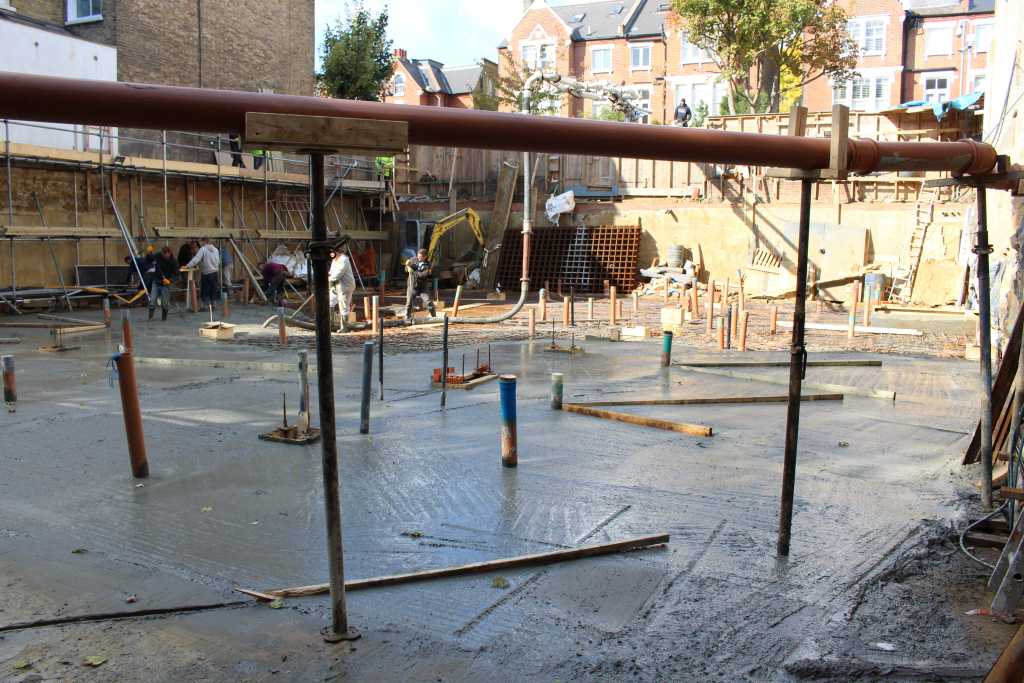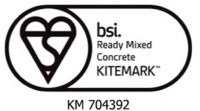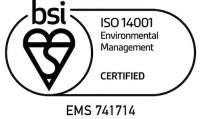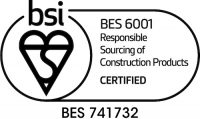Equipment Required
- Tools to level and clear the ground, such as a spade, rake and compactor
- Waterproof membrane
- Timber for your formwork
- Drill & screws/hammer & nails
- Steel mesh
- Laser or string line
- Spirit level
- Wheelbarrows
- Tarpaulin
Safety Equipment
- Eye protection to protect against concrete splashes or cement dust
- Long trousers and sleeves as concrete can be a skin irritant
- Rubber gloves to protect your hands
- Tall rubber boots, in case you need to wade in!

How to Prepare for the Concrete Pour
Step 1
The first step in the process is to prepare the ground. To do this you should remove all debris, turf and stone, and compact the remaining earth to ensure a level finish.
Depending on your project, you may need a layer of compacted hardcore to support the structure. Usually a Type 1 MOT hardcore is suitable for domestic builds, such as shed bases or driveways.
You may want to lay a waterproof membrane if you’re concerned about damp rising into the structure.
Step 2
The next step is to build your formwork. This is the frame that will create the shape of the finished slab and keep it in place until the concrete has cured.
The form or frame is usually made from timber and needs to be strong and level. The timber you build with needs to be as deep as you want the slab to be, and thick enough to remain sturdy and straight when the wet concrete pushes against it.
Consider laying steel mesh inside the form if you think your structure will need reinforcement.
If you are building next to an existing structure you will want to ensure the edges are straight and square. You can do this using a laser or string line and ensuring your formwork lines up with it. Once placed, build up any gaps between the ground and the frame with hardcore or soil and compact it, again ensuring it remains level. Also pack up the outside of the frame with soil to provide extra support.
Finally, use a spirit level to ensure the top of the frame is straight so your finished slab will have an even surface.
Step 3
Placing your order can be tricky if you’re not sure what type or quantity of concrete you require. Try our resources below to help you make a decision, but if you’re unsure, we recommend consulting a professional builder who can help you decide how thick your slab needs to be and the best type of concrete for the project.
Use our concrete calculator to work out how much concrete you need.
Find out more about the different types of concrete and their strengths.
Step 4
Once your order is placed, prepare your site for the delivery.
If you plan on using wheelbarrows to get the concrete from the mixer vehicle to the required location, make sure you have a few labourers on hand to help, and enough wheelbarrows to speed up the job.
EasyMix vehicles carry 2 extra wheelbarrows that you can use if you don’t have enough.
Clear a safe path for the wheelbarrows, removing any debris or obstacles, building safe ramps up any steps or hills, and filling in any holes or gaps that could present a problem.
If you’ve hired a concrete pump to speed up the job, you will need to make sure the mixer vehicle and the pump have enough space to park. The mixer vehicle alone is around 11 metres long, and with the pump as well the space required goes up to about 20 metres, which is about 4 car lengths.
If you have a ground line pump, you will need to clear a path for the operator to lay it, and you may want to protect any areas that could be damaged by the pipes with thick blankets or a tarpaulin.



